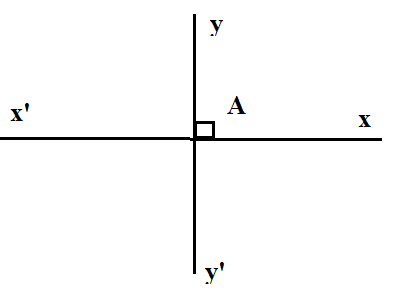cho p=(x+5)(ax^2+bx=25) và q=x^3=125 tìm a,b sao cho p=q (giúp mình với ạ);-;
Hãy nhập câu hỏi của bạn vào đây, nếu là tài khoản VIP, bạn sẽ được ưu tiên trả lời.



Lời giải:
Gọi tổng số học sinh khối 7 là $a$ (em).
Theo bài ra ta có: $a-2\vdots 3; a-3\vdots 4; a-4\vdots 5; a-5\vdots 6, a-9\vdots 10$
$\Rightarrow a+1\vdots 3,4,5,6,10$
$\Rightarrow a+1 =BC(3,4,5,6,10)$
$\Rightarrow a+1\vdots BCNN(3,4,5,6,10)$
$\Rightarrow a+1\vdots 60$
$\Rightarrow a+1\in\left\{0; 60; 120; 180; 240; 300;...\right\}$
Mà $a$ trong khoảng từ 235 đến 250 nên $a=240$ (em)
Gọi số học sinh khối 7 là: a
Theo đề bài,
-biết số học sinh chia cho 3 dư 2
=>(a+1)\(⋮\)3
-a chia 4 dư 3
=>(a+1)\(⋮4\)
-a chia cho 5 dư 4
=>(a+1)\(⋮5\)
-a chia cho 6 dư 5
=>(a+1)\(⋮6\)
-a chia 10 dư 9
=>(a+1)\(⋮10\)
Từ đó =>(a+1)\(\in BC\left(3;4;5;6;10\right)\) (và \(236\le a+1\le251\))
BCNN(3;4;5;6;10)=23.3.5=120
<=> BCNN(3;4;5;6;10)=B(120)={0;120;240;360;480;...}
Mà \(236\le a+1\le251\)
=>a+1=240
=>a=240-1
=>a=239
Vậy số học sinh khối 7 ngôi trường đó là 239

\(\left(2x-1\right)\left(3x+5\right)+\left(-6x^3+5x\right):x\)
\(=6x^2+10x-3x-5-6x^3+5x:x\)
\(=-6x^3+6x^2+12x-5:x\)
\(=-6x^2+6x+12-\dfrac{5}{x}=-6\left(x^2-x-12\right)-\dfrac{5}{x}\)
A = (2\(x\) - 1)(3\(x\) + 5) + (-6\(x\)3 + 5\(x\)): \(x\)
A = 6\(x^2\) + 10\(x\) - 3\(x\) - 5 + \(x\)(- 6\(x^2\) + 5): \(x\)
A = 6\(x^2\) + 7\(x\) - 5 - 6\(x^2\) + 5
A = (6\(x^2\) - 6\(x^2\)) + 7\(x\) - (5 - 5)
A = 7\(x\)

\(\left(n+5\right)^2=64\left(n-2\right)^3\)
\(\Leftrightarrow\left(\dfrac{n+5}{n-2}\right)^2=64\left(n-2\right)\) (nếu \(n=2\) thì đồng thời \(n=-5\), vô lý)
Nếu \(64\left(n-2\right)\) không là số chính phương thì \(\dfrac{n+5}{n-2}=8\sqrt{n-2}\), vô lý vì VT là số hữu tỉ trong khi VP là số vô tỉ.
Do đó \(64\left(n-2\right)\) là số chính phương hay \(\dfrac{n+5}{n-2}\inℤ\)
\(\Leftrightarrow\dfrac{n-2+7}{n-2}\inℤ\)
\(\Leftrightarrow1+\dfrac{7}{n-2}\inℤ\)
\(\Leftrightarrow\dfrac{7}{n-2}\inℤ\)
\(\Leftrightarrow n-2|7\)
\(\Leftrightarrow n-2\in\left\{\pm1;\pm7\right\}\)
\(\Leftrightarrow n\in\left\{3;1;9;-5\right\}\)
Thử lại, ta thấy chỉ có \(n=3\) thỏa mãn. Vậy \(n=3\)

a) Số đo \(\widehat{xAy}\) là: 90o vì có kí hiệu vuông góc.
b) Số đo \(\widehat{x'Ay}\):
Vì \(\widehat{x'Ay}\) và \(\widehat{xAy}\) là hai góc kề bù nên
nên \(\widehat{x'Ax}\) = \(\widehat{x'Ay}\) + \(\widehat{xAy}\)
180o = \(\widehat{x'Ay}\) + 90o
\(\widehat{x'Ay}\) = 180o - 90o
\(\widehat{x'Ay}\) = 90o
c) Số đo \(\widehat{x'Ay'}\):
Vì \(\widehat{xAy}\) và \(\widehat{x'Ay'}\) là hai góc đối đỉnh
nên: \(\widehat{x'Ay'}\) = \(\widehat{xAy}\) = 90o
d) Số đo \(\widehat{xAy'}\):
Vì \(\widehat{xAy'}\) và \(\widehat{x'Ay}\) là hai góc đối đỉnh
nên \(\widehat{xAy'}\) = \(\widehat{x'Ay}\) = 90o

\(\left(2x-3\right)\left(x-\dfrac{1}{2}\right)=0\\ \Rightarrow\left[{}\begin{matrix}2x-3=0\\x-\dfrac{1}{2}=0\end{matrix}\right.\\ \Rightarrow\left[{}\begin{matrix}2x=3\\x=\dfrac{1}{2}\end{matrix}\right.\\ \Rightarrow\left[{}\begin{matrix}x=\dfrac{3}{2}\\x=\dfrac{1}{2}\end{matrix}\right.\) (Thêm KL cuối dòng: Vậy \(x\in\left\{\dfrac{3}{2};\dfrac{1}{2}\right\}\))


\(P=\left(x+5\right)\left(ax^2+bx+25\right)\) (Sửa =25 thành +25)
\(Q=x^3+125=x^3+5^3=\left(x+5\right)\left(x^2-5x+25\right)\) (Sửa =25 thành +25)
Để \(P=Q\Rightarrow\left(ax^2+bx+25\right)=\left(x^2-5x+25\right)\)
\(\Rightarrow\left\{{}\begin{matrix}a=1\\b=-5\end{matrix}\right.\)